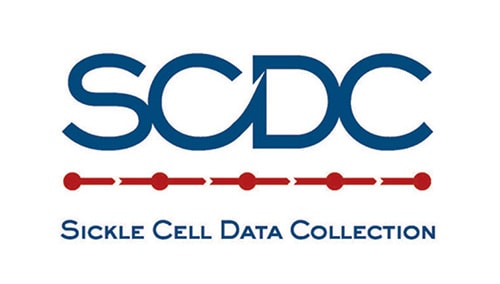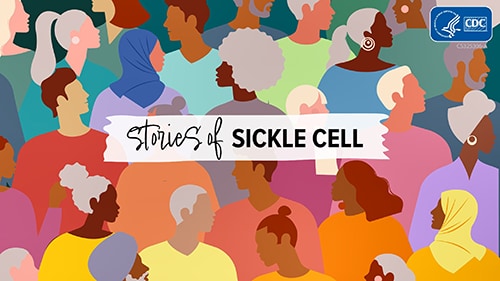Sickle Cell Data Collection (SCDC) Program
The Centers for Disease Control and Prevention (CDC) is working to improve the lives of people with sickle cell disease (SCD), an inherited blood disorder. Learn about CDC’s SCDC program, and find a suite of online resources that can help you or someone you know live healthy with SCD.

Sickle cell disease (SCD) is a blood disorder present at birth. People with SCD have sickle-shaped red blood cells that stick together and block blood and oxygen from reaching all parts of the body, leading to health problems such as pain, anemia, infections, and stroke. Approximately 100,000 Americans are affected by SCD. CDC is committed to studying SCD to improve the health and care of people with this condition.
The Sickle Cell Data Collection (SCDC) Program

The SCDC program works with teams in the shaded states on the map below to collect and link data from several sources.
The SCDC program, which has been ongoing since 2015, collects health information about people with SCD to study the long-term trends in diagnosis, treatment, and healthcare access for people with SCD in the United States. Currently, there are 11 states participating in the SCDC program. As more resources become available, CDC plans to expand the program to include additional states. The program will help inform policy and healthcare standards to improve and extend the lives of people with SCD.
Learn more about the SCDC program:
- SCDC Program Fact Sheet
- SCDC Surveillance Summary
- SCDC Program Data
- SCDC Publications
- SCDC Policy Memo: Understanding Sickle Cell Disease: CDC’s Role in Surveillance, Education, and Awareness
- The Bloodline Newsletter is a quarterly e-newsletter providing updates about the SCDC Program. Visit the webpage to subscribe.
Other Online SCD Resources

For Patients and Caregivers
- CDC’s SCD materials webpage has fact sheets and infographics on living well with SCD. SCD resources are also available in Spanish at our SCD Spanish webpage.
- The Steps to Better Health Toolkit was created by CDC in partnership with the American Society of Hematology (ASH). The toolkit includes common complications of SCD and steps to take for better health.
- Stories of Sickle Cell is a video series, collection of short stories, and photoblog that aims to highlight the unique stories and diverse identities of those living with SCD.
- The Sickle Cell Trait Toolkit is a collection of fact sheets covering various health problems affecting people with sickle cell trait.
- Stepping Up is a 2-part video series for teenagers and young adults with SCD. The videos share the stories of two young adults with SCD, Kevin and Calvanay, and their transition to adult care, how it has affected them, and how they’ve overcome challenges. Spanish transcripts of the videos are available online.
- SCDC webinars, hosted by the SCDC program in California, are free and open to the public. Watch previous recordings or sign up to join the email list for announcements about upcoming webinars.
For Healthcare Providers
- “Understanding the Complications of Sickle Cell Disease,” published in the American Journal of Nursing, provides an overview of major SCD-related health complications, as well as the nursing implications for each. CNE credits are available. Use this free resource to download and print a table that lists the major SCD complications and their nursing implications.
- Provider Training Video Series: “Reducing Complications of Therapeutic Blood Transfusions in Sickle Cell Disease” is a four-part educational video series for healthcare providers. Created in collaboration with the CDC and the Georgia Health Policy Center, this training series is designed to provide information about and strategies for reducing transfusion complications in people with SCD.
- Tools and information about SCD, including free educational materials to give to patients.
What You Can Do
Help spread the word! We encourage you to share our resources with friends, family, and colleagues to help people with SCD live healthy. Follow @CDC_NCBDDD on Twitter for future updates and to learn about new resources on SCD and other blood disorders. For more information about SCD, visit CDC’s SCD website.
